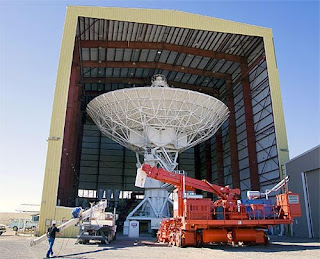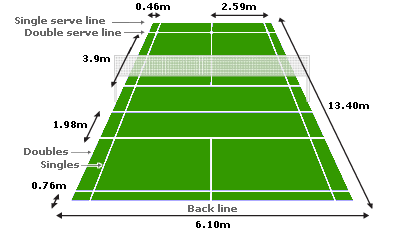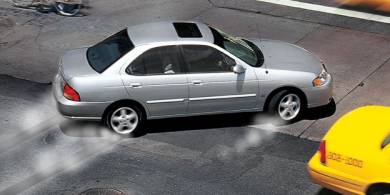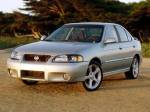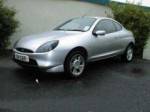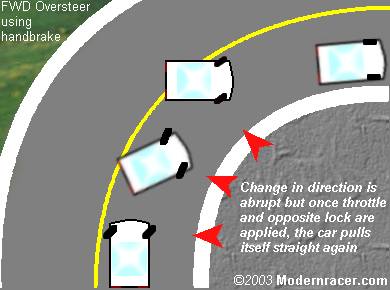This is the largest Earth Mover in the world..... built by the German company, Krupp, and seen here crossing a federal highway in Germany en route to its destination (an open-pit coal mine). It is cheaper to move the thing like this, than to construct or reassemble onsite.
Specifications:
~ The mover stands 311 feet tall and 705 feet long.
~ It weighs over 45,500 tons
~Cost $100 million to build
~ Took 5 years to design and manufacture
~ 5 years to assemble.
~ Requires 5 people to operate it.
~The Bucket Wheel is over 70 feet in diameter with 20 buckets,
each of which can hold over 530 cubic feet of material.
~ A 6-foot man can stand up inside one of the buckets.
~ It moves on 12 crawlers (each is 12 feet wide, 8' high and 46 feet long). There are 8 crawlers in front and 4 in back. It has a maximum speed of 1 mile in 3 hours (1/3 mile/hour).
~ It can remove over 76,455 cubic meters each day.
(100,000 large dump trucks at 40yds. each)
~ The mover stands 311 feet tall and 705 feet long.
~ It weighs over 45,500 tons
~Cost $100 million to build
~ Took 5 years to design and manufacture
~ 5 years to assemble.
~ Requires 5 people to operate it.
~The Bucket Wheel is over 70 feet in diameter with 20 buckets,
each of which can hold over 530 cubic feet of material.
~ A 6-foot man can stand up inside one of the buckets.
~ It moves on 12 crawlers (each is 12 feet wide, 8' high and 46 feet long). There are 8 crawlers in front and 4 in back. It has a maximum speed of 1 mile in 3 hours (1/3 mile/hour).
~ It can remove over 76,455 cubic meters each day.
(100,000 large dump trucks at 40yds. each)
-----------------------------------------------------------------------
Mega Telescope
It's just like the pickup in your garage--only this truck's torque equals that of a half-dozen semi tractors. The axle assembly (top) is the size of an F-150.
"This isn't lab-coat science," says one of the crew moving giant radio telescopes around New Mexico's remote Plains of San Agustin high desert. "This is blue-collar science--we're outer space's plumbers." Here, at the National Radio Astronomy Observatory's Very Large Array (VLA), astronomers look into the deepest parts of the universe using interconnected 82-ft-wide radio-telescope dishes. Arranged in a giant Y, the 27 dishes can be reconfigured using 72 different mounting pads along the lengths of the 13-mile-long legs. When it's time to reposition the array, the VLA's jeans-and-boots-wearing crews and two specially built movers swing into action as though they're switching lenses on a giant camera.
It's just like the pickup in your garage--only this truck's torque equals that of a half-dozen semi tractors. The axle assembly (top) is the size of an F-150.
"This isn't lab-coat science," says one of the crew moving giant radio telescopes around New Mexico's remote Plains of San Agustin high desert. "This is blue-collar science--we're outer space's plumbers." Here, at the National Radio Astronomy Observatory's Very Large Array (VLA), astronomers look into the deepest parts of the universe using interconnected 82-ft-wide radio-telescope dishes. Arranged in a giant Y, the 27 dishes can be reconfigured using 72 different mounting pads along the lengths of the 13-mile-long legs. When it's time to reposition the array, the VLA's jeans-and-boots-wearing crews and two specially built movers swing into action as though they're switching lenses on a giant camera.
Built in the 1970s as the VLA itself was being constructed, the two movers--known as the High Plains Lifter and Jack of Diamonds--ride atop two parallel sets of standard-gauge railroad tracks. The diesel engines turn hydraulic pumps that send pressurized fluid to four-wheel "trucks" that in turn propel the movers. The 230-ton telescopes are bolted atop the backs of the movers. At each mounting pad, a set of tracks runs perpendicular to the Y's leg.
When a mover reaches that intersection, it stops and the crew goes to work ensuring it's perfectly positioned to change direction. Hydraulic pistons raise and turn the mover 90 degrees so that the crew can crawl underneath and align the truck to the tracks leading to the next mounting pad. Since the movers top out at about 3 mph, even a short trip takes hours; traveling the length of the Y can consume an entire day. While the mover's engine drones, the hydraulic system emits a low-grade hiss, and the steel wheels creak on the rails. But no matter how undignified the sound, the sight of a telescope moving through desert is simply, well, majestic.
-----------------------------------------------------------------------
Mega Dump
In the world of mining trucks, there's an ongoing dispute about exactly which one is the largest. Many of these beasts are equipped with electro-mechanical drivetrains, like a locomotive. But not this massive Cat. The 797B uses the same kind of direct mechanical drive as, say, a Chevy Silverado. So in terms of conventional powertrains, this is the largest. "It's just a big yellow truck," says Mark Richards, marketing supervisor for Caterpillar's large mining trucks division. A big yellow truck powered by a V24 diesel that generates 3370 hp and a mind-boggling 12,170 lb-ft of torque.
Driving the 797B is easy--once I get up the ladder that crosses in front of a radiator so massive it could double as a barbecue grill for the Jolly Green Giant. Inside the steel-fortified cockpit, I sit on a flat, squishy hydraulic seat facing a conventional steering wheel. My foot hits an accelerator pedal of normal proportions, and most of the instrumentation is familiar except for a digital readout that tells me how much tonnage is in the bed behind me. The engine's air starter screams until the immense V24 rumbles to life.
Put the seven-speed automatic into gear, and the truck initially lurches forward before lumbering off the line. It's then I realize that I'm almost 20 ft in the air, and what's behind me is three times bigger than any house I've ever lived in. The hydraulic steering has no feel, but it reacts quickly, and the 50 oil-cooled, 42-in. disc brakes could stop a runaway continental shelf. In fact, it's so confidence-inspiring that I'm tempted to become overconfident--not good when a mistake could mean picking the remains of my own Toyota Tundra out of the 797B's undercarriage. After thorough and thoughtful consideration, I think I'll keep my day job.
Mega Boeng
The 110-ton TLD DBL-110 loader can handle 68 tons of cargo. The deck, which is one-third the length of a football field, can be elevated to a height of 33 ft.Boeing's wide-body airliner assembly plant in Everett, Wash., is the largest building on Earth by volume--472,370,319 cu ft. Big things here are almost pedestrian. Even so, the 118-ft-long, 32-wheel TLD DBL-110 cargo loader stands out. Way out. "That's DBL," chief operator Chris Dailey says, "as in Darn Big Loader." Actually, darn big is an understatement: This is the largest aircraft loader, period. The DBL-110 is the ground link in the supply chain for production of Boeing's new 787 Dreamliner. The manufacturing of 787s is global, so the challenge was to orchestrate final assembly in Everett. Suppliers fly in parts on a fleet of three modified 747-400s called Dreamlifters. The DBL-110 is then used to offload wings, fuselage sections and tailpieces through the swing-away tails of the 747s. The DBL's cargo deck is identical to the deck of the 747--whatever fits inside the aircraft fits onto the loader. Its cab is stuffed with monitors, hydraulic deck controls and a laser sensor that aligns the loader with the plane. However, it's the operator who guides the loader up to the aircraft, not a computer. And the two vehicles never make contact. Freight moves from the plane's belly across an inch-wide gap and onto the loader's rails.
With 32 wheels, 16 axles and six programmable steering modes, the DBL-110 is, yes, fun to drive. We very carefully drove it along Everett's runway aprons, and it's surprisingly simple to operate--pick the right steering mode, and it's nearly capable of rotating around its own center axis. Pick another mode, and the loader crab-walks. "Here, let's put you in the air," Dailey says as he raises the loader to its full 33-ft-high extension. The engines are now 30 ft below me, but the unladen DBL-110 remains stable and steerable.
When you're hauling millions of dollars of parts along busy taxiways, it pays to be maneuverable.
-----------------------------------------------------------------------
Mega Dozer
The LeTourneau's massive bucket is 24 ft wide. So, in a schoolboy's fantasy, it could easily swallow two 1970s Cadillac Fleetwoods piled on top of one another and lift the sedans 45 ft in the air before dumping them
Asarco's open-pit Ray Mine in Arizona is so rich in copper that water sprayed on its dirt roads to keep down the dust instantly turns green as the ore oxidizes. If you stand at the bottom of the mine, which covers more than 50,000 acres, and look up at its high, tiered walls, you travel back in time to the top shelf, where the first cuts were made a generation ago by men with picks and shovels. Here at the bottom, though, the world's largest wheel loader--the LeTourneau L-2350--gulps 75 tons in a single bite.
The L-2350 is a 2300-hp monster: After tearing into the desert dirt a few hundred times, the steel teeth welded to the bottom edge of its bucket shine like silver. The machine's gaping maw is designed to dump rock and ore loosened by explosives into a seemingly endless line of huge trucks that haul it away for processing. Like most wheel loaders, the LeTourneau is articulated in the middle with massive hydraulic rams that pivot the huge hinge with 3400 psi. The Detroit diesel V16 is the size of a Ford F-350. At a governed 5 mph, the L-2350 burns through 1050 gal of fuel in 24 hours. This $7.6 million machine is so freakishly enormous that it was assembled on-site, and when its useful life is over, it will be scrapped on-site too. It will never have left the mine--from cradle to grave.
Only veteran operators are allowed to handle the L-2350, and Ruben Rosalez looks the part. Rosalez, who started out working in underground mines and whose burly build, graying ponytail and weathered work clothes would look perfect atop a Harley, jokingly says his greatest qualification for operating the L-2350 is his "depth perception." But seeing him drive the monster using two joysticks--the left one controls the machine's movements, the right controls the bucket--is to see professional expertise become a mechanical ballet.
My perch, a small jumpseat next to his chair, gives me a view of the 13-ft-tall, chain-wrapped tires from high above. "The chains aren't for traction," Rosalez says. "The tires just last longer this way." The whole machine is covered with the mine's dust--washing the L-2350 would itself probably yield a couple of pounds of copper. But we're here today to get that L-2350 a little dirtier. "The name of the game is to fill those trucks," Rosalez explains as he settles in and points to the line of dump trucks.
With that, the massive torque plunges the bucket's teeth forward, deep into the dirt. After scooping up the load, the LeTourneau rocks back on its haunches, all the while bouncing on squishy sidewalls like a coast guard cutter in constant 20-ft waves. And when Rosalez lines the bucket up to one of the trucks, it seems to exhale as it dumps the load. "I guess I'm used to the motion," Rosalez says, never losing his rhythm as he fills a truck in three scoops, then blows his horn to signal the next one over. "I don't even feel it. In fact, maybe I love it."







